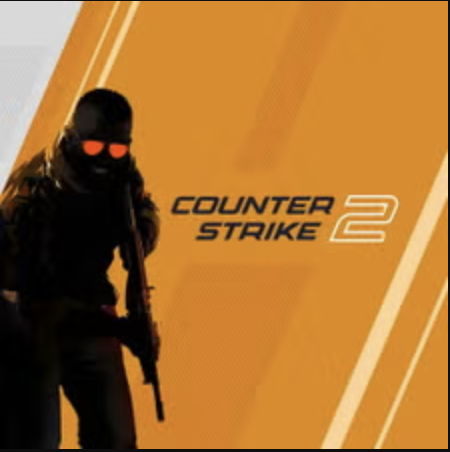
Counter-Strike 2
All trademarks belong to their respective owners. Get GameThe Art of the Clutch: Mental Fortitude and Strategic Plays in Counter-Strike 2
In Counter-Strike 2 (CS2), the battlefield is constantly shifting, but some of the most memorable and impactful moments occur when a round comes down to a single player against multiple opponents: the clutch. The ability to win these seemingly unwinnable situations is a hallmark of truly exceptional players, showcasing not just superior aim and mechanics, but also immense mental fortitude, precise game sense, and the courage to make bold, calculated plays. Mastering the art of the clutch is about understanding opponent psychology, utilizing every resource, and maintaining composure under extreme pressure.
What Defines a “Clutch”?
A clutch typically refers to a situation where a player wins a round despite being significantly outnumbered (e.g., 1v2, 1v3, 1v4, 1v5). These moments are often pivotal, turning what would have been a lost round into a morale-boosting victory for your team and a demoralizing defeat for the enemy.
Key Elements of Clutch Play:
- Composure and Mental Fortitude:
- Stay Calm: The most critical factor. Panic leads to rushed shots, poor decisions, and wasted utility. Take a deep breath, and remind yourself it’s just a game.
- Focus on the Process: Don’t think about “winning the clutch.” Instead, focus on the next immediate logical step: getting the first kill, checking a specific corner, or listening for sound cues.
- Ignore the Clock (Initially): While time is a factor, don’t let it rush you into bad decisions, especially early in a clutch. The clock becomes more important with fewer enemies or a planted bomb.
- Confidence: Believe you can win. A positive mindset can significantly impact your performance.
- Sound Cues and Information Gathering:
- Listen Actively: Every footstep, weapon switch, reload, and utility pull provides vital information. Good headphones are essential. Listen for:
- Enemy Footsteps: Direction, proximity, and even their speed (walking vs. running).
- Utility Usage: Flashes, smokes, and molotovs tell you about enemy intentions and positions.
- Weapon Sounds: Can indicate what guns enemies have or if they are reloading.
- Read the Kill Feed: The kill feed (top right of screen) shows who died. This helps you track remaining enemies, understand their positions, and know if your teammates damaged them.
- Use Radar: The mini-map shows enemy positions if your teammates spot them or if they’re making noise.
- Listen Actively: Every footstep, weapon switch, reload, and utility pull provides vital information. Good headphones are essential. Listen for:
- Positioning and Movement:
- Play Angles: Use sharp angles to expose yourself to only one enemy at a time, forcing them to push into a disadvantageous fight.
- Re-position After Kills: After securing a kill, immediately change your position. The remaining enemies will expect you to be in the same spot. This is called “re-peeking” or “moving to an unexpected angle.”
- Use Cover: Always fight from behind cover. Never peek into multiple enemies from an open position.
- Trade Kills: If possible, try to force a one-for-one trade in a disadvantaged situation.
- Silent Movement: Walk or crouch-walk when necessary to avoid giving away your position, especially when setting up an ambush.
- Utility Management (The Unsung Hero of Clutches):
- Smoke Grenades:
- Block Vision: Crucial for separating enemies, allowing you to take isolated duels.
- Cover Defuse/Plant: If the bomb is planted, a well-placed smoke can buy precious seconds for a defuse.
- Fake Smokes: Sometimes, throwing a smoke can trick enemies into thinking you’re pushing a different area.
- Flashbangs:
- Entry Flashes: Blind enemies as you peek an angle.
- Escape Flashes: Use to blind enemies if you need to retreat.
- “Pop Flashes”: Quick flashes that blind enemies with little reaction time.
- Molotovs/Incendiary Grenades:
- Deny Area: Force enemies out of cover or prevent them from pushing a certain choke point.
- Defuse Denial: Throw on a planted bomb to prevent defusal, forcing enemies to risk taking damage or waiting it out.
- HE Grenades: Chip damage, or finish off low-health enemies.
- Conserve Utility: Don’t waste your grenades early in the round if you anticipate a clutch situation. Hold onto them for critical moments.
- Smoke Grenades:
- Bomb Site Management (CT-side Defuse Clutches):
- Know the Plant Spot: Anticipate where the Terrorists likely planted the bomb.
- Pre-Fire Common Spots: As you approach the bomb, pre-fire common angles where enemies might be holding.
- Tap Defuse: If you’re exposed, consider “tap defusing” – quickly tapping the defuse button for a split second to check if an enemy will peek. This can bait out a shot.
- Defuse vs. Kill: If the bomb is planted, prioritize the defuse. You only need to kill enemies if they are directly preventing the defuse. Sometimes, a quick defuse is possible even with enemies nearby.
- Using a Kit: Always try to get a defuse kit if possible. It cuts defuse time in half, making clutches much easier.
6. Learning from Clutch Masters:
- Watch Professional Players: Study how pro players handle clutch situations. Pay attention to their movement, how they use utility, their crosshair placement, and their decision-making under pressure.
- Analyze Your Own Replays: After a match, watch your own clutch attempts (successful or failed). What could you have done better? Were you too rushed? Did you miss crucial sound cues?
The art of the clutch is a combination of mechanics, game sense, and psychological warfare. It’s about turning desperation into defiance, and a potential loss into a glorious victory. By systematically practicing these elements, any player can improve their ability to pull off those awe-inspiring, round-winning moments in Counter-Strike 2.